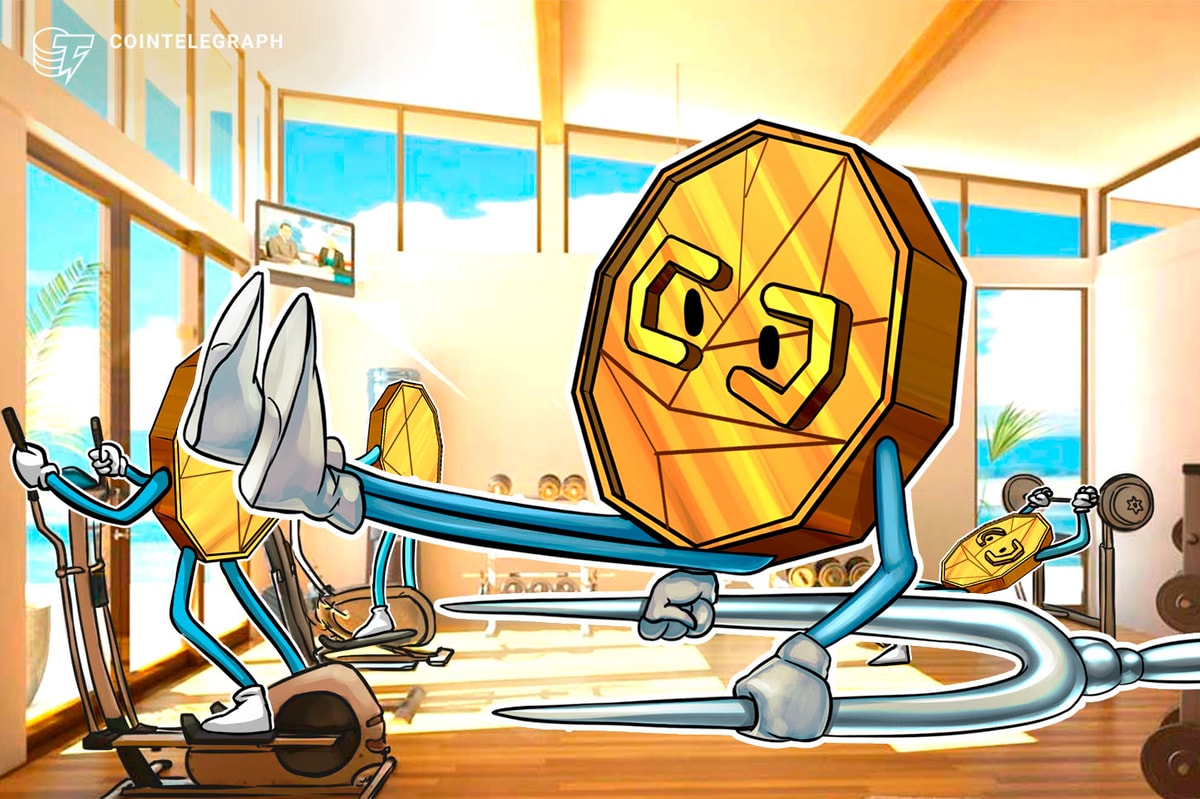
Two attempts to increase Bitcoin’s block size limit via hard forks — Bitcoin XT and Bitcoin Classic — have failed to gain much support in terms of network hashrate, but early bitcoin advocate and angel investor Roger Ver is not giving up on the cause. Ver is currently testing a new mining pool at Bitcoin.com, and he’s put together a new development team to work on an alternative to Bitcoin Core, the reference implementation of the Bitcoin protocol.
Bitcoin Magazine recently reached out to Ver to get more details on his plan to increase the block size limit by way of a hard fork.
A Work-in-Progress
According to Ver, his plan for hard forking Bitcoin is still a work-in-progress. “I still have lots more research and thinking to do,” he told Bitcoin Magazine. “The first step is to actually have our pool up and running. I think you will see our first block mined on the network this coming week.”
The Bitcoin.com mining pool mined its first block a few days after Bitcoin Magazine reached out to Ver.
The current mining pool software is running Bitcoin Unlimited, but Ver says a specific plan for increasing the Bitcoin block size has not been chosen at this time. With Bitcoin Unlimited, nodes are able to choose the maximum size of the blocks they create and accept as valid. According to one Bitcoin.com mining pool developer, the pool will mine 1 megabyte blocks and accept blocks as large as 16 megabytes for now.
When asked about an activation threshold for a hard fork, Ver seemed to distance himself from the idea of increasing the block size limit without a large amount of support signaled by miners on the network. “Ultimately the threshold is always 51 percent, but we would also likely support something higher in order to try to maintain more cohesiveness with the community,” he said.
Ver is unable to publicly disclose the members of his alternative Bitcoin development team at this time, although he recently stated during an episode of The Bitcoin Game that former Bitcoin Core lead maintainer Gavin Andresen is not on the team.
In terms of how much hashing power the pool will have on mainnet, Ver told Bitcoin Magazine, “We will start off with a very small amount on mainnet to test for a few blocks, and then grow quickly from there.”
Bitcoin Unlimited Forks Classic Off Testnet
Although the Bitcoin.com mining pool only recently went live on the mainnet, the pool has been operating on testnet for over a month. In fact, the Bitcoin.com mining pool forked Bitcoin Classic off of the testnet because Bitcoin Unlimited signals support for BIP 109 without actually implementing the full set of rules in that specific proposal.
“I would recommend reading the discussions that already took place on /r/btc about this,” said Ver when asked about this incident.
When Bitcoin Core contributor and Blockstream CTO Greg Maxwell challenged Ver regarding the testnet fork and the “consensus inconsistencies between Bitcoin ‘Classic’ and other implementations are now causing Classic to reject the testnet chain with most work,” Ver pointed out, “We are testing on testnet. That’s what testnet is for.”
Bitcoin Unlimited has been promoted as production-ready software for at least half a year, which is one of the reasons why some Bitcoin Core contributors have been seeking further clarification on exactly what was being tested with Ver’s testnet mining pool.
“[Bitcoin Unlimited] and [Bitcoin] Classic both claim to support the same consensus rules (BIP109), but are diverged and will not share the same testnet anymore — the whole point of a consensus system is to come to consensus and [Bitcoin Unlimited] and [Bitcoin] Classic will reliably fail to do so on testnet,” commented Maxwell.
Bitcoin Unlimited developer Andrew Stone shared his views on the testnet fork in a blog post. “Bitcoin Unlimited's ‘excessive block’ and ‘excessive accept depth’ algorithm is not just an arbitrary choice — it’s the optimal choice rational software can make in an untrusted network,” he wrote. “In essence, it encourages the client's preferences to the extent that the client can do so, but then follows the majority when the client's preference is rejected.”
Scaling Bitcoin to Meet Customer Demand
In Ver’s opinion, the current 1 megabyte block size limit is preventing further adoption of Bitcoin as a digital cash system. “As someone who has 15 years of experience scaling enterprise networks before my involvement in Bitcoin, there is no doubt in my mind that the network can handle significantly larger than 2 megabytes blocks today,” he stated.
In fact, in the aforementioned interview on The Bitcoin Game, Ver claimed a block size limit of 20, 30, 40, or even 50 megabytes may be fine. A key clarification on this statement is that Ver does not believe excess block size would be used right away. “If the maximum block size today was set at 50 megabytes, the blocks wouldn’t be 50 megabytes,” he said. “The blocks would probably be about a megabyte-and-a-half — maybe two megabytes.”
In his comments to Bitcoin Magazine, Ver took this point further. “If there was no limit on the block size at all today, most blocks would likely be somewhere between 1.2 megabytes and 3 megabytes at the moment.”
In the past, Bitcoin Core contributors, such as Blockstream’s Mark Friedenbach, have argued that miners with better connections have an incentive to create bigger blocks. A miner could potentially stuff blocks full of transactions in order to gain a competitive advantage over their peers.
The key for Ver is to allow Bitcoin to scale in tandem with customer demand. He does not want to see potential users move away from Bitcoin due to its “lack of scalability today.”
“Sadly this is already happening on a large scale,” said Ver. “But the current [Bitcoin Core] development team doesn’t seem to realize this or care. Some of them were even openly advocating that people use credit cards instead of Bitcoin at a local Silicon Valley Meetup earlier this year.”
“I feel disturbed that some would consider it traitorous to mention that there exist systems other than Bitcoin that solve problems that Bitcoin doesn't,” said LedgerX Bitcoin developer and Bitcoin Core contributor Bryan Bishop when asked to comment on Ver’s reaction to the views expressed at Silicon Valley Meetup.
To some, the idea of using a decentralized system, such as Bitcoin, to buy a morning coffee at Starbucks doesn’t make much sense. There are tradeoffs when switching between centralized payment providers, such as Visa or Mastercard, and Bitcoin, and it’s unclear if there is much point to paying for a morning coffee on a system where the main value proposition is censorship resistance.
In 2013, there was a belief in the Bitcoin community that the average person would soon make all of their purchases via the peer-to-peer digital cash system, but the reality is — at least up to this point — that normal people don’t seem to have any desire to use Bitcoin for everyday purchases. Last year, Blockchain Capital Managing Partner Brock Piercenoted consumer adoption of Bitcoin could be a five– to twenty-year process.
Due to the 10-minute confirmation time associated with Bitcoin blocks, some say that the peer-to-peer digital cash system is not suitable for purchases at brick-and-mortar stores. The Bitcoin Core scaling roadmap includes layer-2 solutions, such as the Lightning Network, which allow for essentially instant confirmations at little to no cost. Others see zero-confirmation transactions as useful for physical retail stores, but these unconfirmed transactions also come with risks.
There are potential risks with the Lightning Network as well, but these risks can be mitigated via Maxwell’s timestop proposal, which is outlined in an updated version of the Lightning Network white paper.
In his final remarks, Ver made his long-term goals for bitcoin clear. “I’m interested in building a currency to rival the Dollar, the Euro, and the Yen,” he said. “Bitcoin will need to scale via many different ways in order to accomplish that.”










